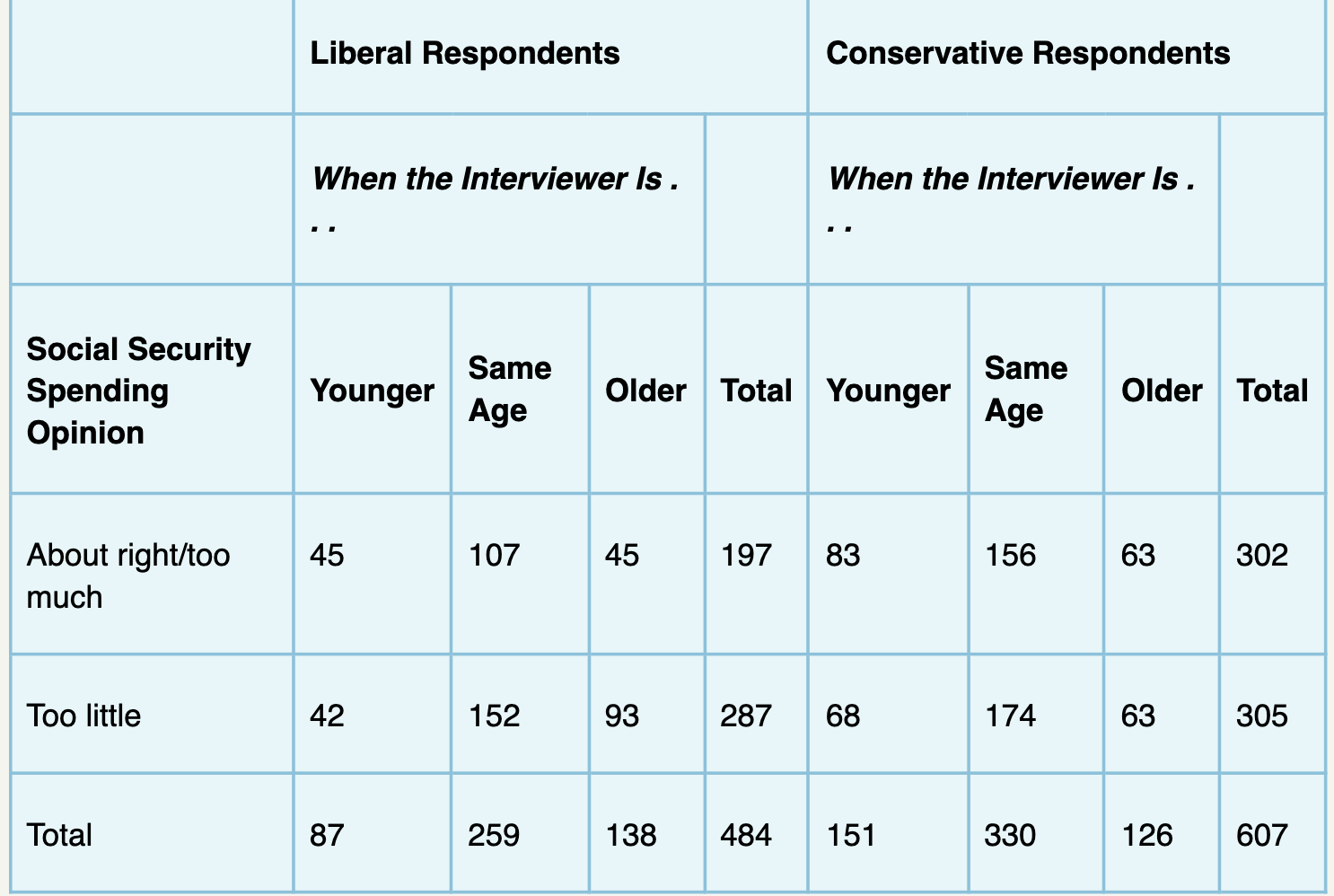Question
Think of the following survey question: Are we spending too little, about the right amount, or too much on Social Security? Would your answer be
Think of the following survey question: "Are we spending too little, about the right amount, or too much on Social Security?" Would your answer be affected by the age of the person who is asking the question? That is, would you be more likely to say "too little" if the questioner were much older than you? Suchinterviewer effectscan indeed make it difficult to elicit truthful answers to survey questions that implicate interviewer characteristics.15Proposition 1:In the case of interviewer age?or, more precisely, thedifferencebetween the interviewer's age and the respondent's age?we would expect that in situations where the interviewer is older than the respondent, respondents will express greater support for Social Security than in situations where the interviewer and respondent are closer in age, or when the interviewer is younger than the respondent.
Now consider this question: Will the age-difference effect be the same for liberals (who are predisposed to support increased spending on Social Security) and conservatives (who are predisposed to oppose increased spending)? When faced with an older interviewer, will conservatives be more likely than liberals to hide their true opinions and falsely profess support?
Proposition 2:The age-difference effect will be stronger for conservatives than for liberals.
- The following table will permit you to analyze the effect of differences in interviewer age and respondent age (independent variable) on support for spending on Social Security (dependent variable), separately for liberals and conservatives (control variable). Respondents are classified by three values of the independent variable: They are either older than the interviewer, about the same age as the interviewer, or younger than the interviewer.16Construct a complete control table from this information by filling in missing percentages.
- Decide which pattern?spuriousness, additive, or interaction?best describes the set of relationships. Write a complete sentence explaining your answer.
- Draw a line chart of the age difference-Social Security opinion relationship, controlling for ideology. The values of respondent-interviewer age difference will appear along the horizontal axis. The vertical axis will record the percentages of respondents saying "spending too little." Enhance the readability of the chart by making 45 percent the lowest vertical axis value and 70 percent the highest vertical axis value.
- Consider all the evidence. Does your analysis support Proposition 1? Explain. Does your analysis support Proposition 2? Explain.

Step by Step Solution
There are 3 Steps involved in it
Step: 1

Get Instant Access to Expert-Tailored Solutions
See step-by-step solutions with expert insights and AI powered tools for academic success
Step: 2

Step: 3

Ace Your Homework with AI
Get the answers you need in no time with our AI-driven, step-by-step assistance
Get Started


